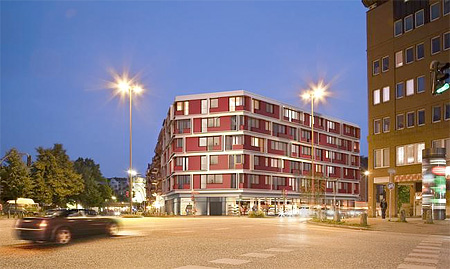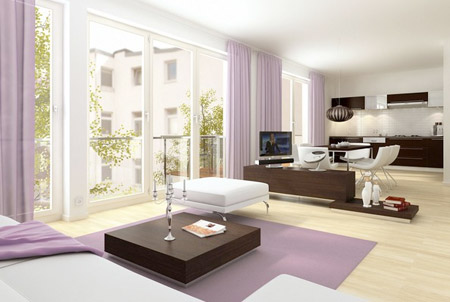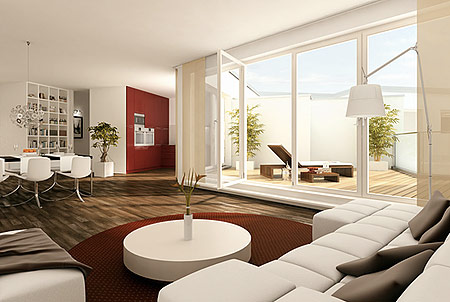Property Marketing Balls Pt.5
Our tipster over in Hamburg was decent enough to inform us about a new block of apartments soon to be built in his city. They’re called FRIEDASchanze, which is a sure sign of trouble. It’s not just the name, which, with it’s two pairs of inverted iambic syllables (linguists, don’t hesitate to correct me here), sounds like a five-car pile-up; but also the strained typographic treatment. Trade names which insist on the use of upper-case lettering in an editorial context are like roudy gate-crashers. From the page or screen, they barge their way in to your consciousness, pretending to be a logo, and then do nothing but loaf around like so much firewood. Quite uncouth.

Having already scoured the grim depths of property marketing phraseology, in which coherence is routinely substituted for an inventory of vagaries, I expected to be sufficiently desensitized so as to cope with anything that the FRIEDASchanze boosters might throw my way. But I was quite wrong. The following quotes are my own translations, and therefore subject to grotesque bias, but I have tried to be as authentic as possible:
“After breathing in the neighborhood air, and a walk through the heads of the people that call this part of the city their home, the modern, striking design for the Frieda’Schanze project was born.”
Striking is that the building cunningly resembles five metro trains parked on top of each other. The model interiors, however, belong firmly to that completely interchangeable genre of effete lifestyle porn which seems to give property developers the hots.

With the apartment’s inspirational moment of conception swiftly dealt with on one page, the Schanze neighborhood is described in some detail on another, setting the scene for prospective buyers.
“Little stores, Arabic falafel stands, Italian pizza bakers with songs of the Adria on their lips, bric-a-brac stores and record shops, rustic pubs like Omas Apotheke for the cultivated evening beer, beach clubs, cool bars for cool types like the Bar Rossi, the hippest clothes shops in the city and many small clubs with DJs in which the newest trends are created ”¦ all of this is the Schanze.“
There are striking parallels between this gushing, romanticised prose, and that of the nineteenth-century tourist/travel writer. Historian Mark Mazower illuminates the Victorian concept of the picturesque in his excellent book Salonica – City of Ghosts:
“Tourists, it is clear, were seeing very much what they had come to see. Their own culturally determined appetites demanded to be satisfied – how could they not be? – inspired by a romanticism which valued new landscapes for the states of mind they induced ”¦ The concrete realities and economic possibilities of the place no longer interested them ”¦ Instead the East was now an aesthetic construct.
In all the examples of real-estate marketing which have been scrutinised by this series, the same is true. A picture of a neighborhood is painted, and the potential buyer of a flat is then invited to identify themselves not with the neighborhood itself, but with the picture of the neighborhood being painted for them. With FRIEDASchanze it’s the aesthetic construct of a vibrant heterogeneous neighborhood, with Berlin’s Palais KolleBelle it’s the geographically displaced joie de vivre of bohemian Paris.

So what is to distinguish the myth-making of property developers from any other kind of advertising, which also relies on inducing “states of mind”? Well for one, property marketing is prone to the observer’s paradox: the vibrant heterogeneous neighborhood which is FRIEDASchanze’s lifeblood will change as a result of its presence. High-priced apartments (average price € 350.000) have a habit of driving up the rent in the surrounding area: the classic symptom of gentrification. Homogenisation is invariably the result. Let’s hope those charming Arabs and Italians in their falafal stands and pizza parlours can still afford their rent in 2011.
The FRIEDASchanze website: www.friedaschanze.de [German langauge]
Best enjoyed mangled by Google’s hysterical translation machine here.
